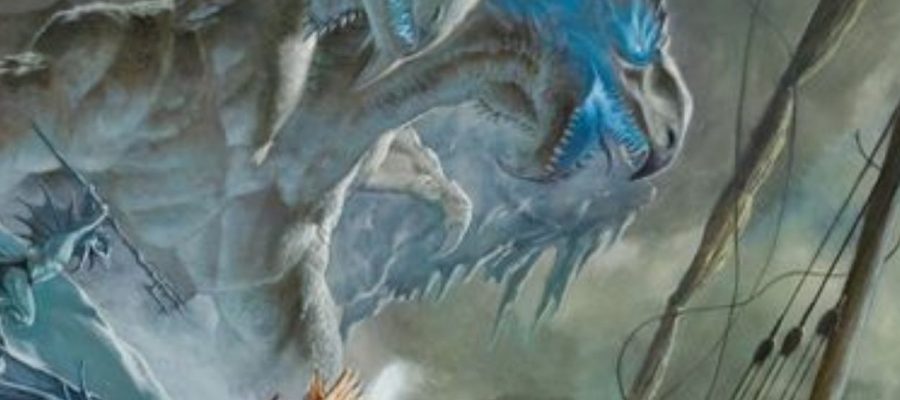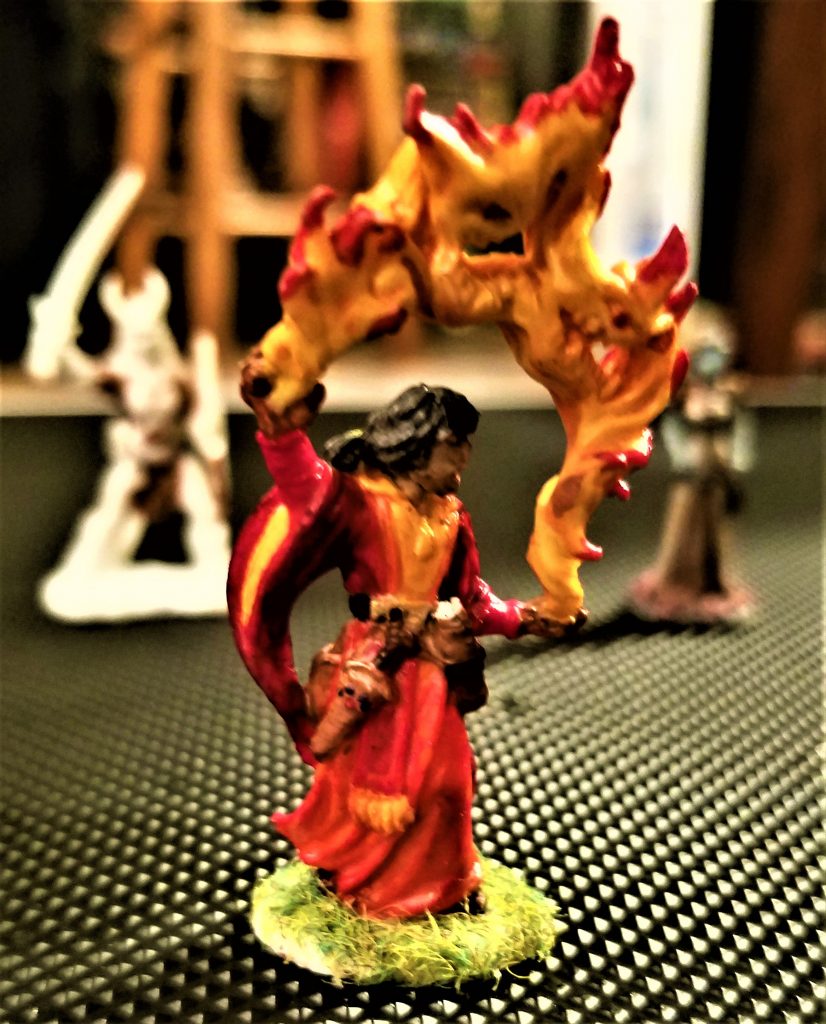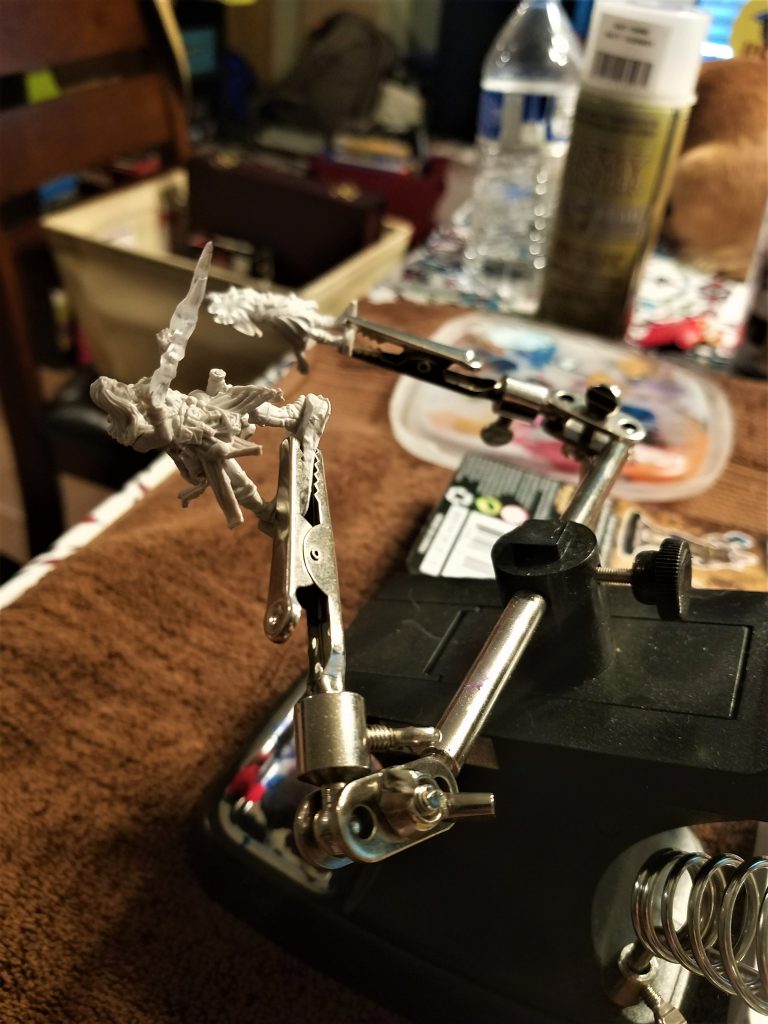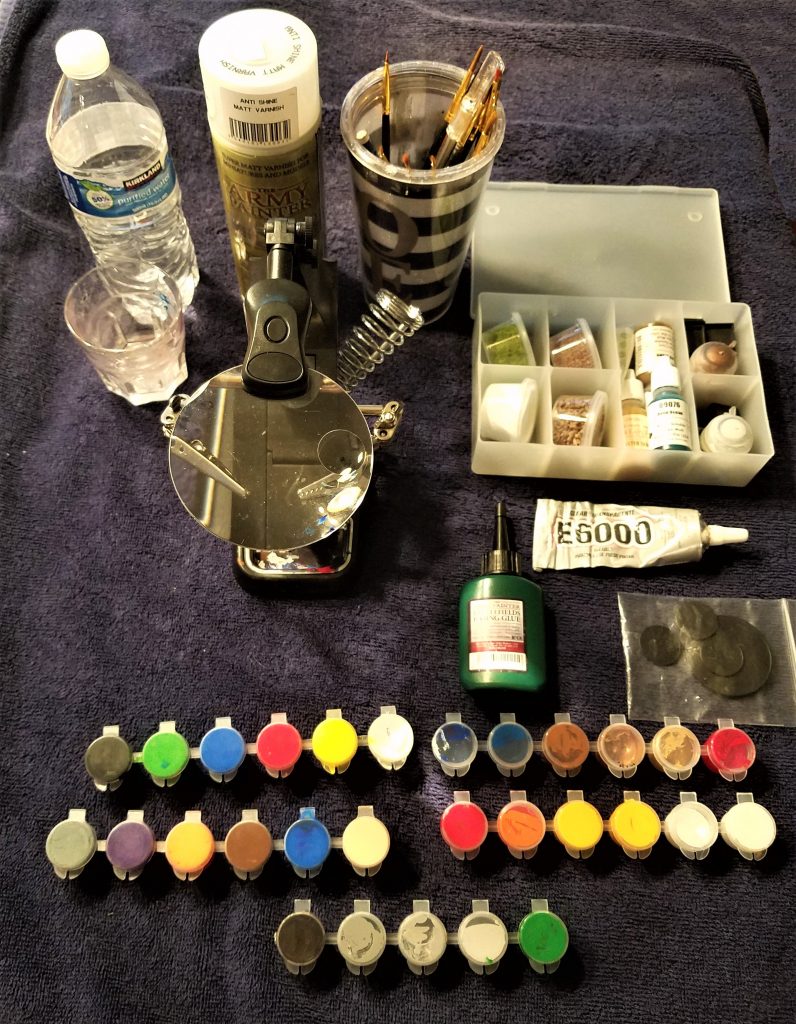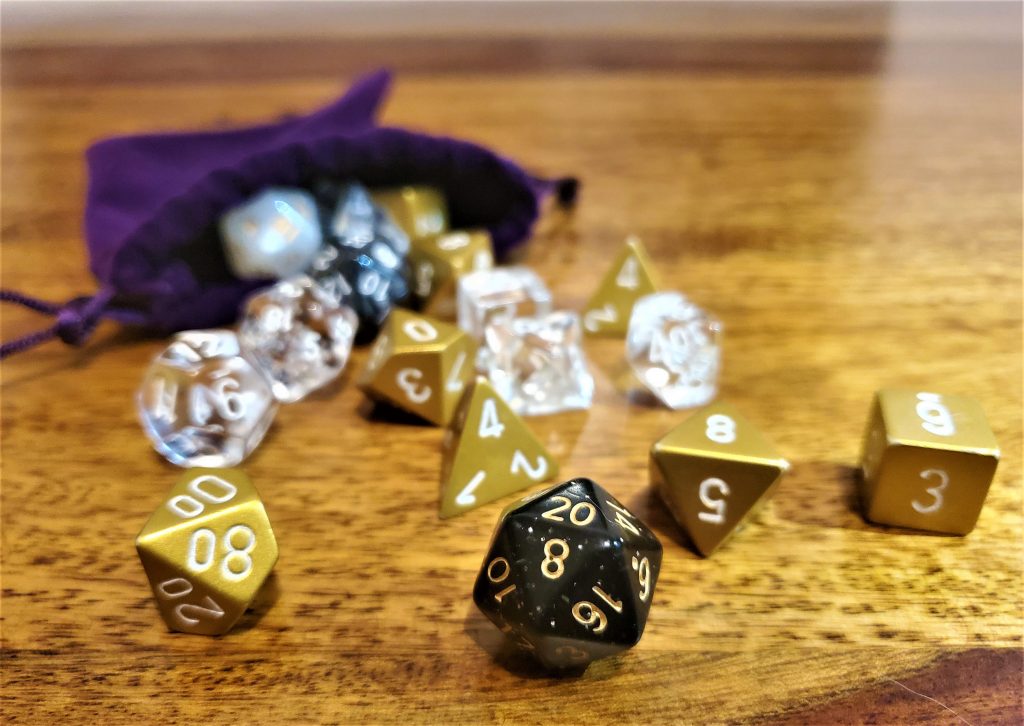Like many people, John and I have heard about the game Dungeons & Dragons since childhood. We both knew a group of people that had their own games but it always seemed like a secret, private club. We’ve seen the game played in shows like Freaks and Geeks but neither of us had any idea how to get into a campaign. We did what a lot of people do; we turned to Google and found ourselves a copy of the D&D Starter Set. The set is billed as everything you need to play the game, yet we felt like we needed to know much more.
The Starter Set comes with a basic rulebook, a set of 6 standard playing dice, five level 1 character sheets, and an intro adventure designed for new players, called Lost Mines of Phandelver. The adventure is simple but fun and easy for new Dungeon Master’s to understand. The rulebook gives a very basic understanding of the rules but only enough to properly use your character sheet for the adventure.
Immediately, we decided we wanted to go all in. Much like any other project we invest in 100%, we went way too hard, did way too much, and learned more than we bargained for.
The Great 3.5 v 5th Edition Debate
After reading over everything we had, I knew I wanted to make a D&D kit with everything we needed to walk up to a table looking like over-prepared badasses. I dove straight into endless Reddit posts, deep reading into countless forums with the hopes of finding an article with everything I needed to buy. What I found was…a lot of difference of opinion and little straightforward information.
Countless sources insisted that I needed to buy 3.5 edition books, as opposed to 5th edition. Knowing what I know now, these sources* weren’t wrong but 90% of the people you’ll meet are using the current 5th edition books. I looked on Ebay for the three Core Rule books: Players Handbook (PHB), Dungeon Masters Guide (DMG), and Monsters Manual (MM), until I found a great deal and started focusing on designing our kit.
*3.5 Edition books are still the highest rated in the D&D series. They allow for much more customization but it’s arguably more complicated. I do not recommend these books for an uneducated player; reading them after the Starter Set left me very confused.
After purchasing everything I thought we needed, John informed me that I had bought the wrong copies and we headed straight to the nearest board game shop. We ended up selling our 3.5 copies to recoup expenses but honestly, I wish we hadn’t. We’ve had enough old school players talk to us about this edition, we are hoping to buy a set later to see how much our characters could be customized.
Finding the Right Miniatures
I found that the question “what types of basic minis do I need for D&D?” was also pretty contentious. In college, I studied a style of expressive arts therapy, called sand tray therapy. This style of counseling uses miniatures of all kinds in sandboxes to help clients tell stories. Long story short, I have a ton of miniatures of all types. I went through my collection and started looking for the types I was missing online.
Sadly, I tried to cut the wrong corners. I attempted to save money by buying miniatures from craft stores, like Michael’s. I ended up with miniatures that are WAY too big and frankly a little silly. My fairies are enormous, the zombies look like giants and the players look like gnomes in comparison. I ended up being able to use some minis, the dinosaurs will be great for the Port of Nyanzaru, but still…rookie mistake. The PHB and DMG both have sections on the proper size for characters, it just missed me entirely.
Asking what types of miniatures to buy is a genuinely difficult question to answer. What you need depends entirely on what stories you plan to run and…well, your budget. Miniatures for RPGs need to be the appropriate sizes in order to match up with combat, maps, etc. That being said, there are certain monster races that occur frequently enough to consider for your permanent collection. For a beginner’s guide to buying minis and other DM items, check out our article on making a DM kit.
Where to Go and What to Do
The final mistake we made was not starting sooner. We had no idea you could find games at board game shops and meetups everywhere. We asked everyone we know, hoping someone else would be curious enough to learn with us. After months of reading and hoping, only one co-worker answered and we tried to run Lost Mines with a DM and only two players. We went to a board game shop, the staff told us about their D&D nights and other ways to meet players.
Every city has their own options for playing tabletop RPG games. Aside from local game shops and meetup groups, you can also play online. Fantasy Grounds and Roll20 are the most popular with players right now. If you can’t seem to find a D&D game anywhere, consider going to a game night for any other tabletop RPG (Magic, Imperial Assault, Warhammer, etc.) Most of these players either want to play or know someone that does.
Dungeons & Dragons is an amazing game that helps take you out of reality, requiring you to rely on quick thinking and imagination. John and I are lifelong gamers that grew up playing RPG video games; playing D&D was like starting Skyrim for the first time. We became addicted to creating characters and watching videos online immediately. We’ve been playing for about a year now but we still learn something new every day.
Want to keep up with our journey and learn more about gaming? Click here to join our mailing list or follow us on social media down below @TwoMixers
